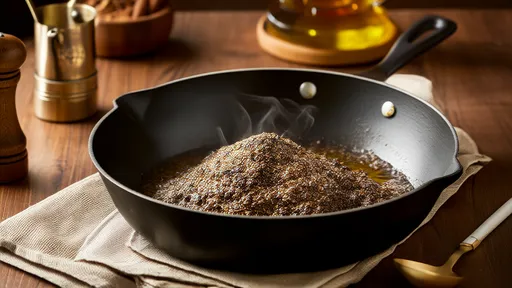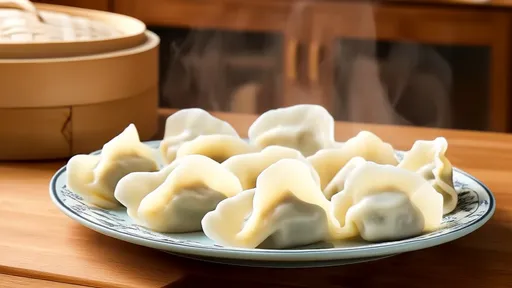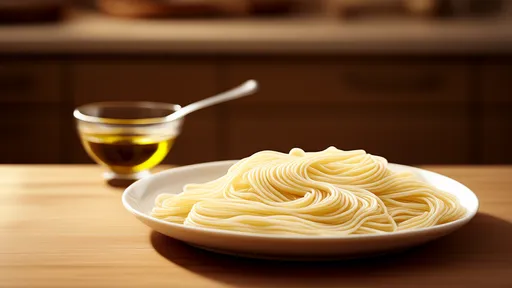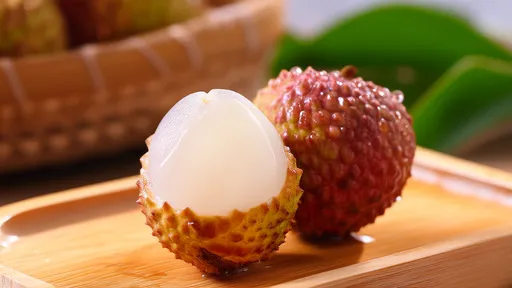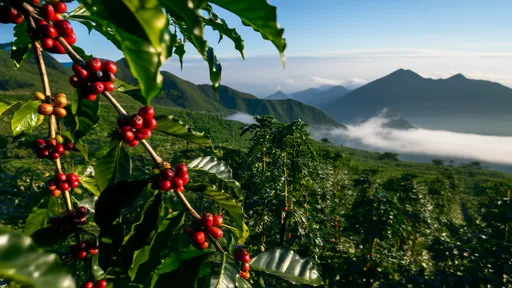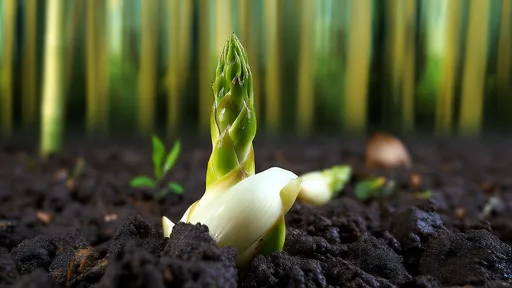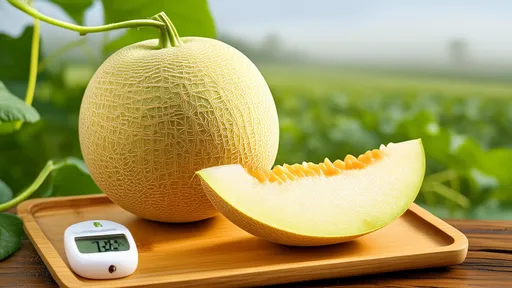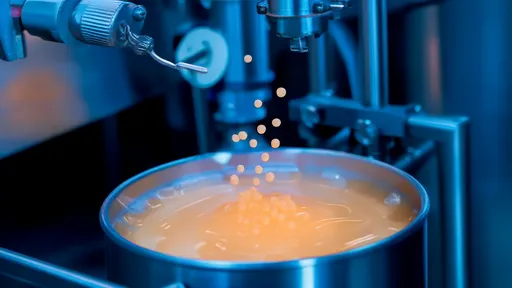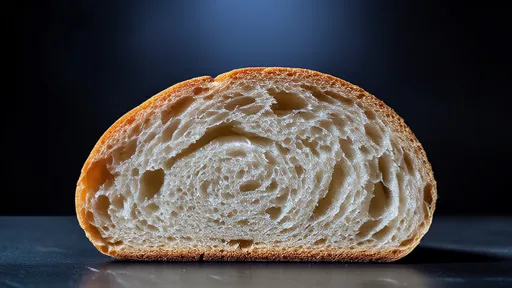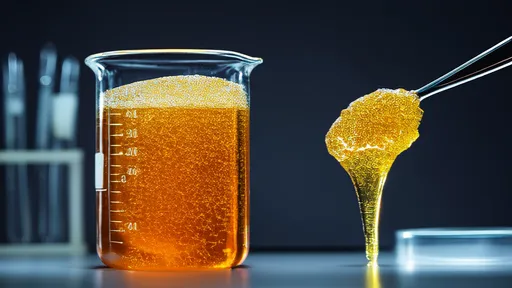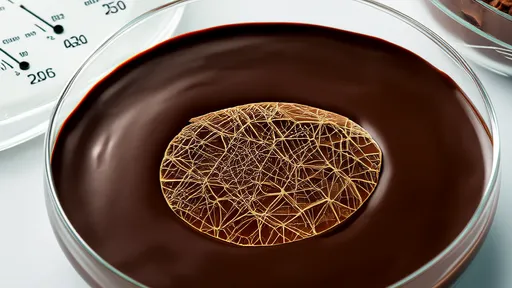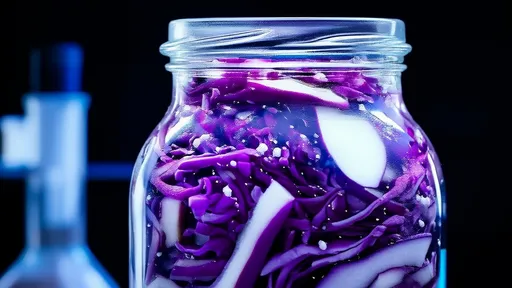Guangdong lychee, a jewel of southern China's fruit basket, has long been celebrated for its succulent flesh and floral aroma. Beyond its irresistible taste, recent research has uncovered a hidden treasure within its vibrant red peel—polyphenols with remarkable antioxidant properties. These compounds are quietly revolutionizing our understanding of how this tropical fruit may contribute to human health far beyond basic nutrition.
The thick, textured rind that most consumers discard actually contains higher concentrations of bioactive compounds than the prized white flesh. Scientists at South China Agricultural University have identified at least fifteen distinct polyphenolic compounds in lychee pericarp, with oligonol and epicatechin emerging as particularly potent antioxidants. What makes these findings extraordinary is that lychee peel polyphenols demonstrate superior free radical scavenging abilities compared to many common dietary antioxidants when tested under controlled laboratory conditions.
Oxidative stress, the biological imbalance between free radicals and antioxidants, lies at the root of numerous chronic diseases and aging processes. The human body naturally produces antioxidants to counteract this, but environmental pollutants, UV exposure, and poor diet can overwhelm our defenses. Guangdong lychee polyphenols appear to intervene at multiple levels—not only neutralizing harmful molecules but also stimulating the body's own antioxidant enzymes through complex signaling pathways that researchers are just beginning to map.
Traditional Chinese medicine practitioners have used dried lychee peel for centuries to treat various ailments, though without understanding the biochemical basis. Modern analytical techniques like HPLC-MS have now validated these historical uses by revealing how the polyphenols interact with human cells. The unique subtropical growing conditions in Guangdong—with its specific soil composition, humidity, and temperature fluctuations—appear to stimulate the production of these protective compounds in the fruit's skin as a natural defense mechanism.
Food scientists are particularly excited about the thermal stability of lychee peel polyphenols. Unlike many plant antioxidants that degrade during processing, these compounds maintain their integrity when subjected to drying or moderate heat. This opens possibilities for creating shelf-stable functional food ingredients without losing bioactivity. Several Guangdong-based companies have already begun pilot projects to upcycle what was previously considered agricultural waste into value-added health products.
The potential applications extend far beyond dietary supplements. Cosmetic researchers in Guangzhou have incorporated lychee polyphenol extracts into topical formulations, noting their ability to protect skin cells from UV-induced oxidative damage comparable to established ingredients like vitamin C derivatives. Meanwhile, food preservation studies demonstrate that lychee peel extracts can significantly delay lipid oxidation in meat products, suggesting natural alternatives to synthetic preservatives.
What sets Guangdong lychee apart from other polyphenol sources is its unique compositional profile. While grapes and green tea contain similar compounds, the specific glycosylated flavonoids in lychee peel appear to have superior bioavailability in human trials. This means more of the ingested antioxidants actually reach the bloodstream rather than being broken down during digestion. The presence of rare a-type procyanidins, typically found in cranberries, adds another layer of therapeutic potential particularly for urinary tract health.
Agricultural researchers are now working to optimize cultivation practices to enhance these beneficial compounds. Early results suggest that organic growing methods and careful timing of harvest—when the peel reaches peak redness but before full sugar accumulation in the fruit—can boost polyphenol concentrations by up to 40%. Such findings could reshape how farmers approach lychee production, potentially creating new market categories based on functional compound content rather than just size and sweetness.
The environmental implications of utilizing lychee peel are equally compelling. Guangdong province produces over half of China's lychee crop, generating thousands of tons of peel waste annually. Developing commercial applications for this byproduct could significantly reduce agricultural waste while creating new revenue streams for farmers. Pilot projects have shown that polyphenol extraction leaves behind residual material suitable for biofuel production or organic fertilizer, creating a near-zero waste cycle.
As research progresses, scientists are beginning to explore synergistic effects between lychee polyphenols and other bioactive compounds. Preliminary evidence suggests that combining them with citrus flavonoids or turmeric curcuminoids may create enhanced antioxidant networks more powerful than the sum of their parts. Such combinations could lead to next-generation nutraceuticals targeting specific oxidative stress-related conditions.
While the science is promising, experts caution that translating lab results into practical health benefits requires further clinical research. The current wave of studies primarily involves cell cultures and animal models, though human intervention trials are now underway at several Chinese medical universities. What's clear is that the humble lychee peel, long considered worthless, may soon find its place among nature's most potent antioxidant sources.
The story of Guangdong lychee polyphenols represents a perfect convergence of traditional wisdom and modern science. As researchers continue to unravel the complex mechanisms behind these compounds' health benefits, consumers may soon view that tough red peel not as waste to discard, but as a valuable resource to cherish—transforming our relationship with this ancient fruit in unexpected ways.
The art of unlocking the full potential of spices lies in a time-honored technique: dry-roasting, crushing, and coaxing out their essential oils. This ancient method, passed down through generations of culinary masters, transforms ordinary spices into aromatic powerhouses that elevate dishes to extraordinary heights. The process may seem simple at first glance, but mastering it requires patience, precision, and an understanding of how heat interacts with different spice varieties.
For many home cooks and professional chefs, peeling and cutting yams can be an unexpectedly unpleasant experience. The vegetable, known for its nutritional benefits and culinary versatility, has a notorious side effect – it can leave your hands unbearably itchy. This common kitchen woe has led to numerous home remedies and old wives' tales, but one surprising solution has emerged from modern technology: the microwave.
The art of making dumplings is a cherished tradition in many cultures, particularly in Chinese cuisine. While the filling often steals the spotlight, the dough wrapper plays an equally crucial role in ensuring the dumplings hold together during cooking. One of the most effective yet underrated techniques for preventing dumpling wrappers from tearing is incorporating egg whites into the dough. This method leverages the science of proteins to create a more resilient and elastic wrapper, capable of withstanding the rigors of boiling or steaming without falling apart.
In kitchens around the world, cooks face a common nemesis when preparing pasta: sticky noodles that clump together into an unappetizing mass. While many swear by the traditional method of rinsing cooked pasta with cold water to prevent sticking, a growing number of culinary experts argue that tossing freshly boiled noodles with olive oil proves far more effective. This technique not only preserves the pasta's ideal texture but also enhances its flavor profile in ways cold water simply cannot match.
Guangdong lychee, a jewel of southern China's fruit basket, has long been celebrated for its succulent flesh and floral aroma. Beyond its irresistible taste, recent research has uncovered a hidden treasure within its vibrant red peel—polyphenols with remarkable antioxidant properties. These compounds are quietly revolutionizing our understanding of how this tropical fruit may contribute to human health far beyond basic nutrition.
The high-altitude coffee farms of Yunnan Province have long been celebrated for producing beans with a distinctive flavor profile. Among the many factors influencing taste, altitude plays a particularly crucial role, especially when it comes to acidity. Unlike the bright, sharp acidity often associated with African coffees, Yunnan’s beans exhibit a more nuanced relationship between elevation and tartness—one that defies simple expectations.
The tender crunch of Zhejiang bamboo shoots has long captivated gourmets and scientists alike, their delicate texture standing as a testament to nature's perfect engineering. While chefs praise their culinary versatility, researchers have uncovered a fascinating cellular secret behind their remarkable freshness – turgor pressure. This biological phenomenon, often overlooked in discussions of vegetable quality, holds the key to understanding why these spring delicacies from China's eastern province maintain their youthful crispness long after harvest.
The Hami melon, a jewel of Xinjiang's agricultural bounty, owes its legendary sweetness to a climatic phenomenon as ancient as the Silk Road itself. Nestled in the arid embrace of China's northwest, this golden-fleshed fruit has thrived for centuries under skies that scorch by day and chill by night. What appears as hardship to most crops becomes the secret alchemy transforming ordinary melons into saccharine masterpieces.
The vast fields of Northeast China, stretching across latitudes from 40°N to 50°N, have long been celebrated as the heartland of soybean production. Among the many factors influencing soybean quality, protein content stands out as a critical metric, not just for nutritional value but also for industrial applications. Recent studies have unveiled a fascinating pattern: the protein content in Northeast soybeans exhibits significant variation along latitudinal gradients. This discovery has sparked renewed interest in understanding how geography shapes the very fabric of this agricultural staple.
The process of homogenization in ice cream mix preparation plays a pivotal role in achieving the desired texture, stability, and mouthfeel of the final product. At the heart of this process lies the principle of fat emulsification, where milk fat globules are broken down into smaller, more uniform particles. This not only enhances the emulsion's stability but also ensures a smoother consistency in the ice cream. The science behind homogenization parameters is both intricate and fascinating, as it directly influences the quality of the end product.
The phenomenon of bread staling has puzzled bakers and food scientists for generations. While most consumers associate staleness with dryness, the underlying mechanisms involve complex interactions between starch retrogradation and water migration within the bread matrix. This intricate dance between moisture and crystalline structures ultimately determines whether your morning toast will delight or disappoint.
The formation of rock sugar crystals is a fascinating interplay of chemistry and physics, where the delicate balance of supersaturation dictates the birth and growth of crystalline structures. At its core, this process hinges on the creation of nucleation sites—tiny clusters of molecules that serve as the foundation for larger crystals. The journey from syrup to shimmering rock sugar is anything but straightforward, and understanding the factors that influence nucleation can unlock greater control over crystal size, clarity, and yield.
The art of chocolate tempering is a delicate dance of temperature control, one that hinges on the precise crystallization of cocoa butter. This process is not merely a technical step in chocolate production; it is the very heart of what gives chocolate its signature snap, glossy sheen, and melt-in-the-mouth texture. Without proper tempering, chocolate can appear dull, develop a grainy texture, or fail to release cleanly from molds. The secret lies in understanding how cocoa butter behaves under varying thermal conditions.
The science behind pickling vegetables has fascinated food chemists and home cooks alike for centuries. While the process may seem straightforward – submerging vegetables in brine – the molecular dance occurring within each cell reveals a complex interplay of chemistry and physics. Recent advances in sodium ion detection techniques have allowed researchers to map the distribution of salt throughout pickled vegetables with unprecedented precision, shedding new light on this ancient preservation method.
The phenomenon of "wine legs" or "tears of wine" has captivated drinkers and scientists alike for centuries. When a glass of wine or spirit is swirled, droplets form on the inside of the glass, creating mesmerizing streaks that slowly trickle back down. This elegant display isn’t just a sign of a good drink—it’s a fascinating interplay of fluid dynamics, surface tension, and evaporation.
